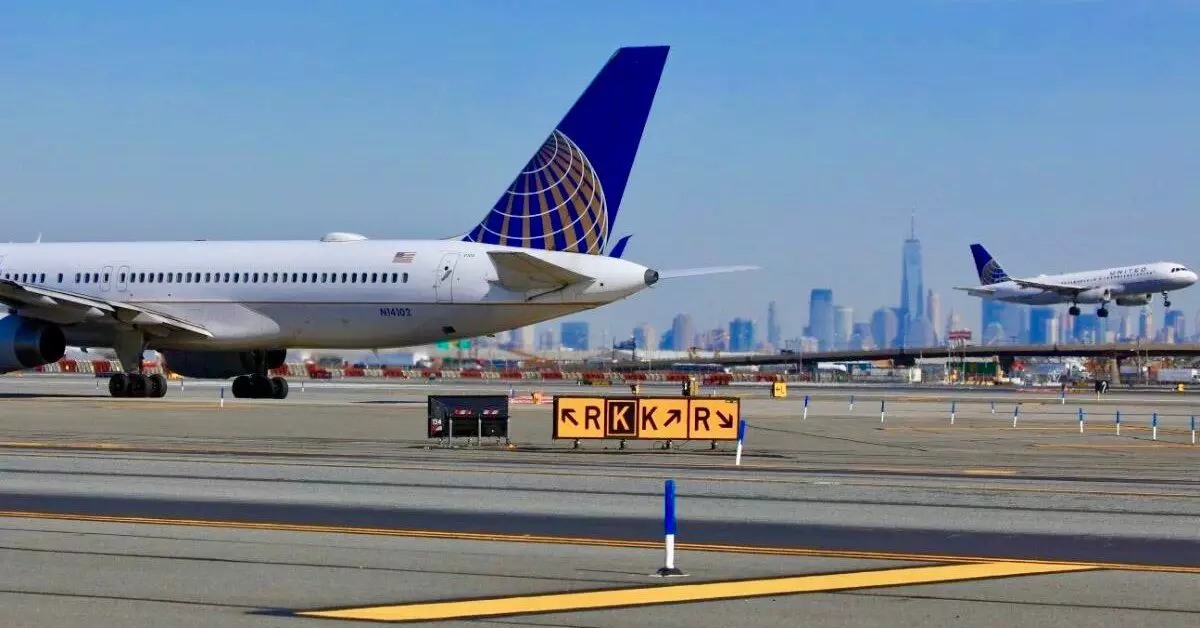The recent radar blackout experienced at Newark Airport is not merely a fleeting inconvenience but rather a glaring symptom of deeper structural failures within the country’s air traffic control system. On a recent Friday morning, controllers lost radar capabilities for an agonizing 90 seconds, a situation eerily reminiscent of a similar incident just weeks prior. This recurring malfunction represents a troubling trend affecting both flight schedules and passenger safety, raising serious concerns about whether our air traffic infrastructure is equipped to handle the demands placed upon it.
With Newark Airport already grappling with operational challenges, the FAA (Federal Aviation Administration) was thrust into the spotlight once again. Hundreds of delayed or canceled flights compounded by the stress levels of air traffic controllers—some of whom have resorted to trauma leave after recent outages—paint a concerning picture. As flight cancellations rose significantly post-outage, it became evident that the situation is deteriorating rapidly, rendering an already stretched system nearly untenable.
Staff Shortages and Outdated Technology
Central to this crisis is a stark reality: the unfortunate shortage of air traffic controllers and the obsolete technology they are forced to use. Representative Josh Gottheimer articulately focused on these weaknesses during a recent press conference. He highlighted the alarming discrepancy between the required number of controllers—ideally around 60—and the current meager count of 22. This staffing deficiency is exacerbating the already overburdened system, stifling its ability to cope with everyday air travel demands.
Equally alarming is the revelation that much of the technology employed remains trapped in a time warp, relying on copper wiring dating back to the 1980s. Such antiquated systems are not merely an inconvenience; they are a recipe for disaster. The earlier incident on April 28, which originated from one of these decrepit wires burning out, showcases a dire urgent need for systemic upgrades, not just cosmetic fixes.
An Urgent Need for Modernization
To invoke change, one must first acknowledge the complete overhaul required in infrastructure and protocols. The FAA is finally starting to recognize the inevitable: that we cannot continue to approach air traffic control as a relic of the past. Recent announcements hint at the installation of state-of-the-art fiber-optic data lines to replace archaic copper connections. Although these developments indicate a step towards modernization, the timeline for full implementation remains vague.
Transportation Secretary Sean Duffy’s multibillion-dollar plan to replace the nation’s beleaguered air traffic control systems cannot come soon enough. As the implementation of high-speed connections and new radar systems unfolds, the pivotal question remains: will these updates occur swiftly enough to avert future crises? The haunting specter of preventable accidents exemplified by recent tragedies further underscores the urgency of such modernization efforts.
The Broader Implications of Technological Negligence
Ignoring the prevailing dysfunction not only endangers the traveling public but also poses substantial economic risks to regions reliant on smooth air traffic operation. Newark Airport serves as a crucial artery for commerce and travel in the United States; prolonged disruptions diminish public confidence and can lead to broader ramifications across the economy. Research indicates that air travel inefficiencies can resonate through various sectors, impacting everything from cargo transport to tourism.
What’s more troubling is that the root causes—a combination of technological neglect and human resource shortages—are not new issues. They are symptoms of a system that has struggled to prioritize investments in safety and efficiency. It is clear that we are at a crucial juncture in our air travel history; it is imperative that stakeholders advocate for a future where air traffic control benefits from advancements befitting a 21st-century travel landscape.
The state of air traffic control demands attention. The repeated incidents at Newark Airport, despite their individual nature, are interconnected threads of an ongoing narrative that reveals the fragility of our transportation infrastructure. Addressing these issues with urgency is paramount not just for the safety of travelers today, but for the foundation of air travel in the future. The stakes are high, and as we move forward, it is critical that authorities prioritize bolstering this essential service before it’s too late.


Leave a Reply